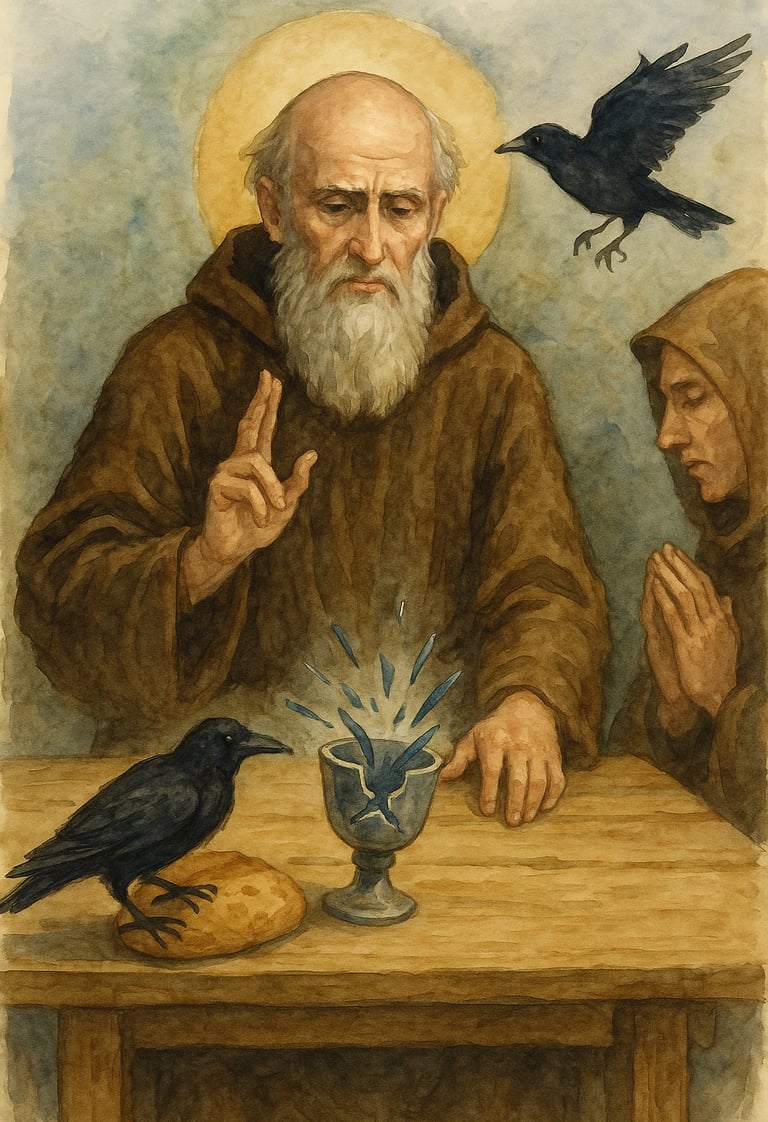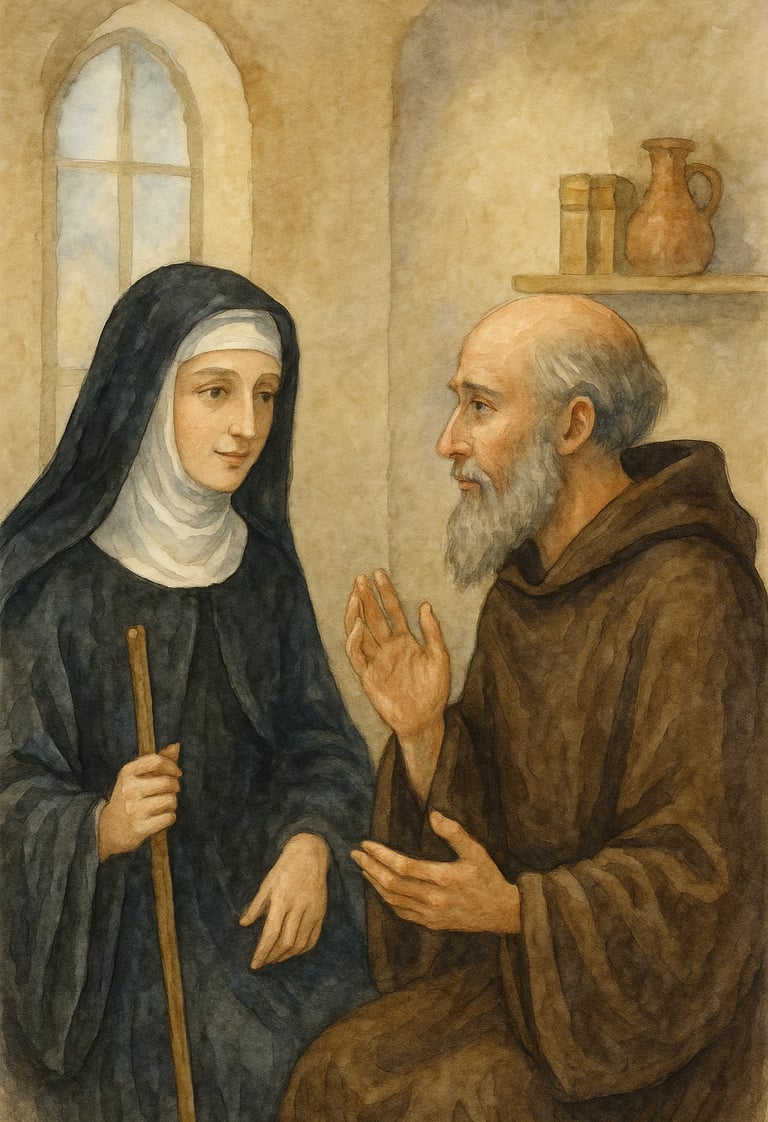St. Benedict Patriarch of Western Monasticism
The Man Who Rebuilt Civilization with a Rule
Halo & Light Studios
7/11/20253 min read


Click Link for a reel of Daily Dose of Saints and Faithful Art:
https://youtube.com/shorts/cbeIw8LnADQ?feature=share
When the Western Roman Empire fell, it left more than broken roads and ruined cities—it left behind a spiritual wasteland. Learning faltered. Violence spread. Even the Church suffered confusion and corruption. Into this void, around 480 A.D., was born a quiet reformer: St. Benedict of Nursia. He wouldn’t rise with armies or wealth, but with a life hidden in Christ—and a Rule that would become the backbone of Christian civilization.
As a noble youth, Benedict was sent to study in Rome, the heart of the old empire. But what he found was moral decay and spiritual emptiness. Disillusioned, he left everything behind—seeking silence, solitude, and God.In the rocky hills of Subiaco, a holy monk named Romanus discovered the young seeker and gave him the monastic habit. At Romanus's urging, Benedict took shelter in a cave called Sacro Speco, where he lived in obscurity for three years, sustained by prayer, fasting, and the food Romanus lowered to him by rope.
But holiness doesn’t hide for long. Drawn by his sanctity, men came. One community asked Benedict to become their abbot—but when he called them to conversion, they tried to poison him. Legend says he blessed the cup—and it shattered. A raven carried off the poisoned bread. The Cross protected him, and the Church took notice.
Benedict would go on to found twelve monasteries, and finally, the great Monte Cassino, built atop the ruins of a pagan temple to Apollo. There he wrote his masterpiece: The Rule of St. Benedict—a path of life marked by humility, obedience, community, silence, hospitality, and prayer. It was a way of holiness that stood in direct contrast to the disorder of his age. Benedictine monasteries became arks of faith: preserving Scripture, educating the young, healing the sick, copying ancient texts, and tilling the land. Rooted in the rhythm of “ora et labora”—prayer and work—these communities quietly kept the light of Christ burning in an age of shadows.
Around 547 A.D., Benedict died—standing in prayer near the altar, having just received Holy Communion. He was buried beside his twin sister, St. Scholastica, a consecrated virgin and the first Benedictine nun. Together, they left a legacy of spiritual order and renewal that shaped Christendom for centuries. In 1964, Pope St. Paul VI named St. Benedict Patron of Europe, recognizing that it all began—not with a throne—but with a cave, a Cross… and a Rule.
“Let them prefer nothing whatever to Christ.”
— Rule of St. Benedict, Ch. 72
🌿 What Is a Sacramental?
A sacramental is a sacred sign instituted by the Church that prepares us to receive grace and strengthens our daily walk in holiness. Unlike the seven sacraments, sacramentals—like holy water, blessed medals, and crucifixes—do not confer grace directly, but they help dispose our hearts to receive it. Used with faith, they are powerful tools of protection, prayer, and spiritual renewal.
One of the Church’s most ancient and powerful sacramentals is the St. Benedict Medal, renowned for its protection against evil, temptation, and physical danger. It honors the saint who confronted the devil not with force—but with the Sign of the Cross. The medal includes Latin inscriptions from ancient Benedictine prayers of exorcism, such as:
“Crux Sacra Sit Mihi Lux, Non Draco Sit Mihi Dux.”
“May the Holy Cross be my light; let not the dragon be my guide.”
The medal in its current form was approved by Pope Benedict XIV in the 1700s, but its roots stretch back centuries earlier. When blessed with the Benedictine exorcism, it becomes a spiritual shield—a visible reminder that Christ has already won the victory.
May we live the Rule in our time.
May we choose Christ above all.


